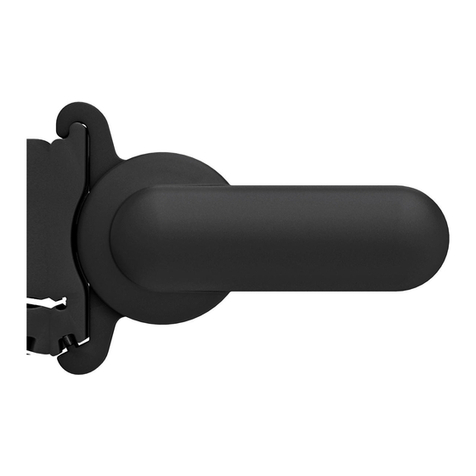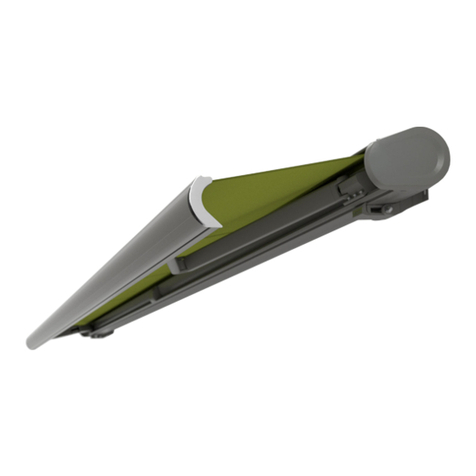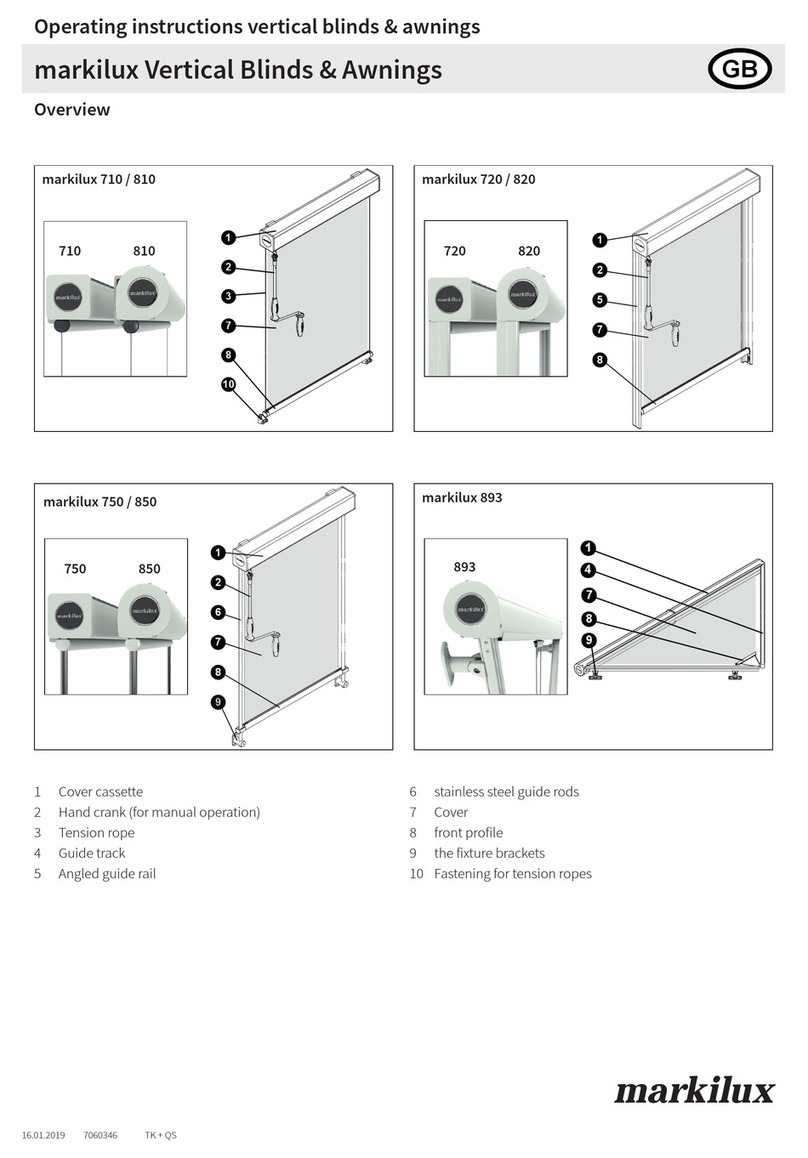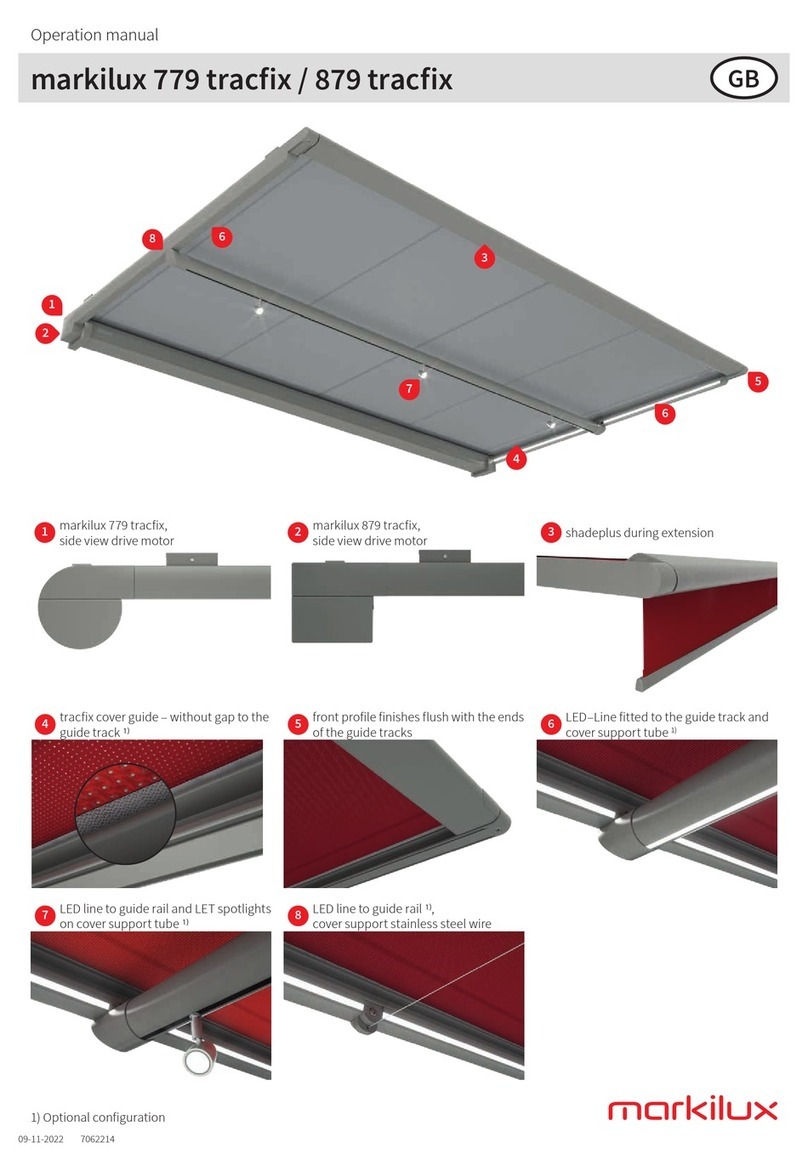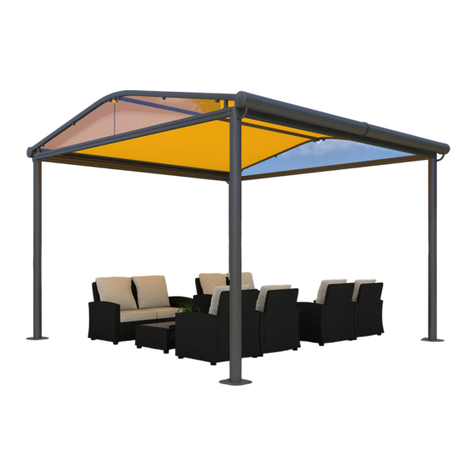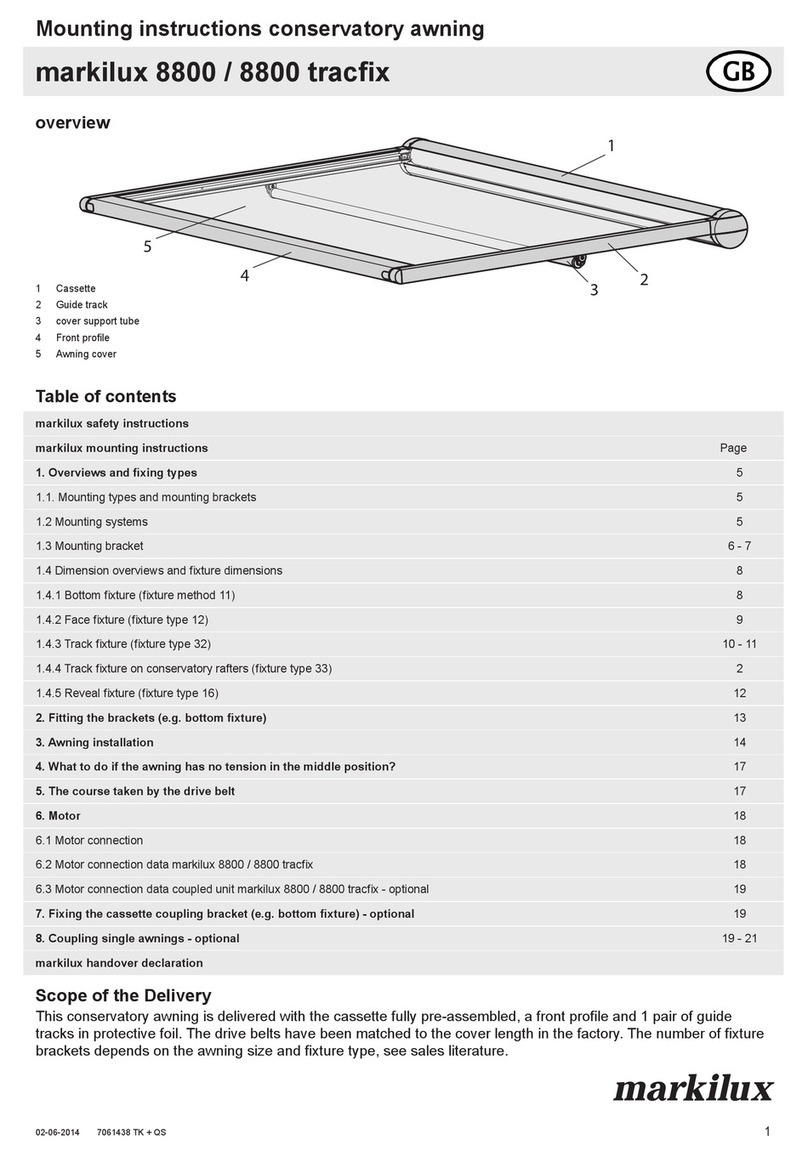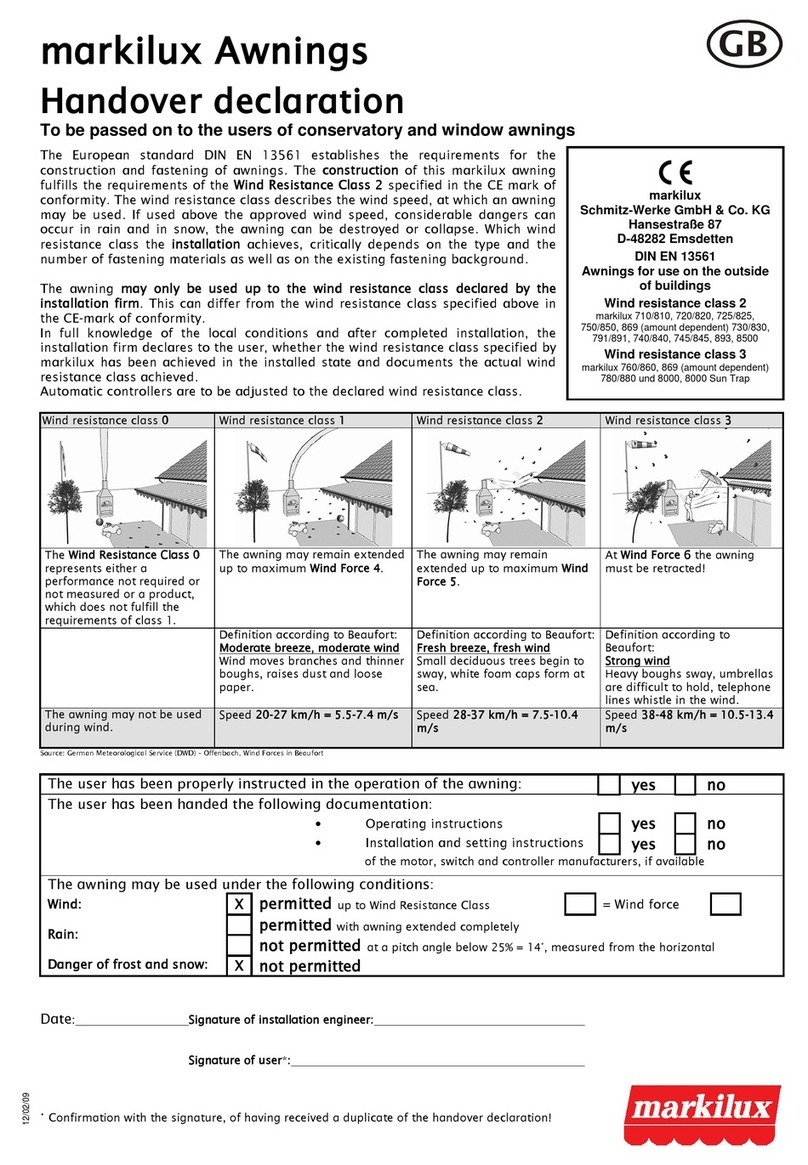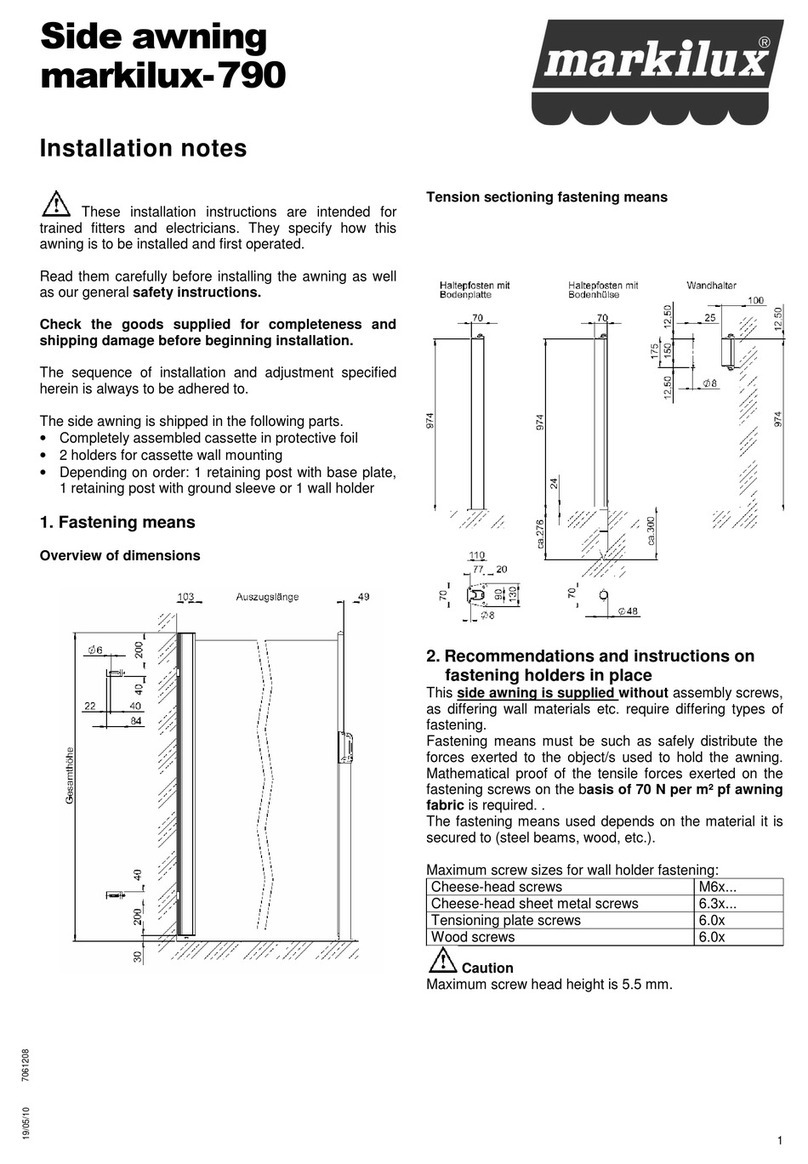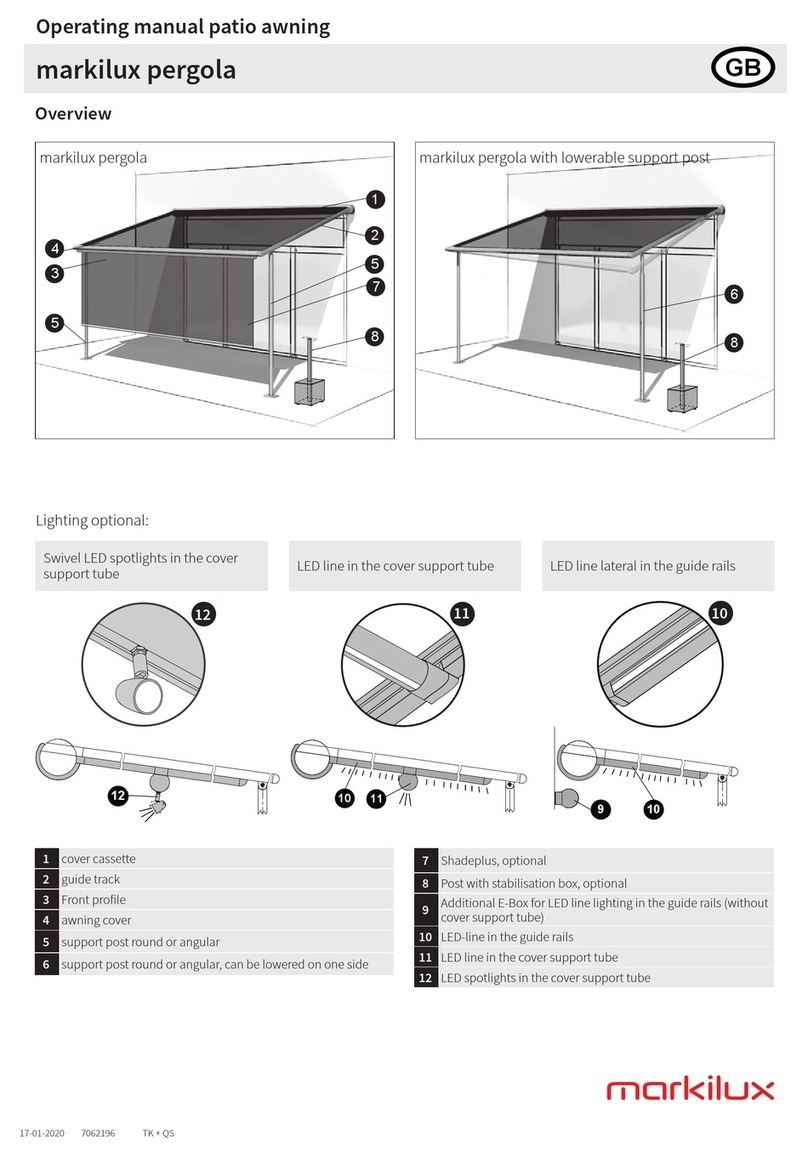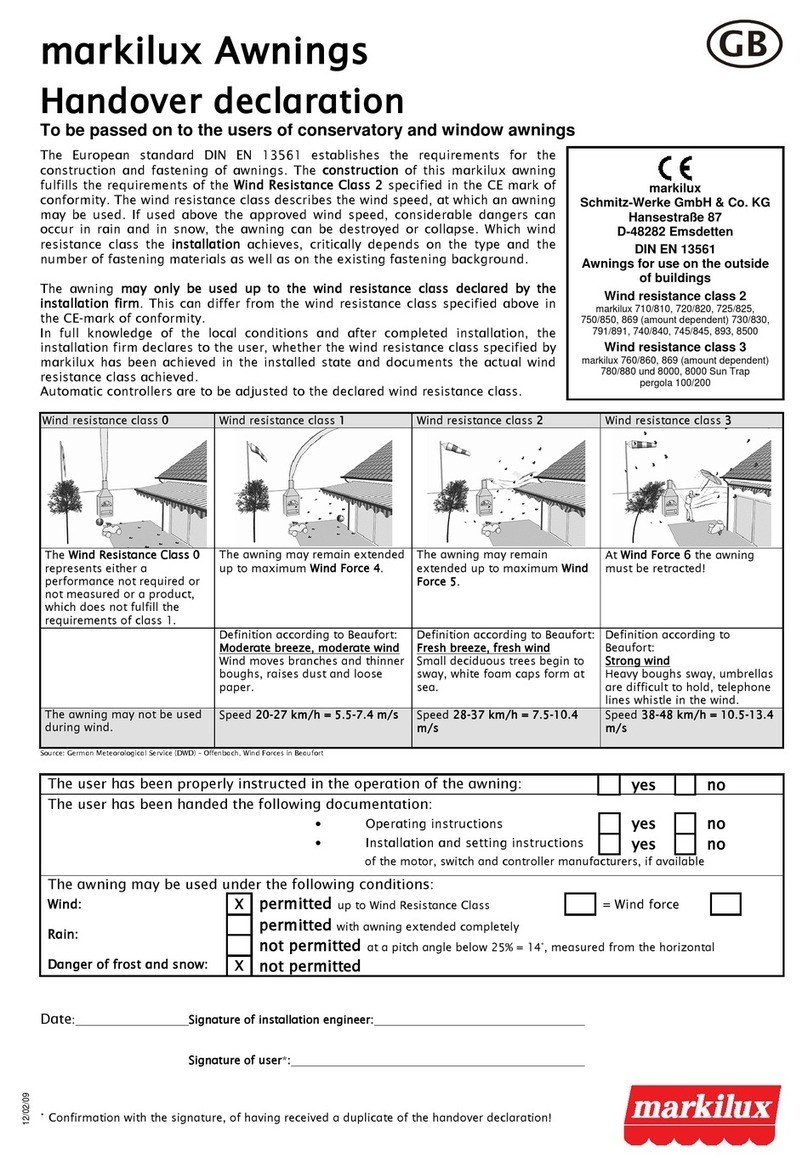
4
14. Maintenance and care
Whether or not cleaning is necessary greatly depends
on the environmental influences (traffic, air pollution,
industrial gases etc.). Depending on the degree of
soiling, regular cleaning is recommended.
Attention: Always use a suitable climbing aid and
never support yourself on the awning or hold on to it!
Remove dust with a soft brush periodically when dry.
Remove foliage and similar dirt immediately.
Treat small stains on the awning cover with a common,
preferably liquid fine detergent mixed with water (water
temperature approx. 30°C, soap solution 5 %). Rinse
thoroughly with water until all detergent residues have
been removed.
14.1 Awning cover when wet
If possible, only retract awning when dry! If the awning
must be retracted wet, this must be extended again to dry
as soon as possible. Due to the cover’s own weight a
sagging is possible, which increases when wet. With wide
units, a sagging of the awning frame profile can also
occur due to its own weight. Both facts do not impair the
function and running characteristic of the awning.
14.2 Cleaning the awning cover
The awning cover is furnished with special waterproofing,
which diminishes with each cleaning. For re-
waterproofing, common tent waterproofing can be used. A
new condition of the material can not however be
achieved through re-waterproofing.
14.3 Cleaning the awning frame
For the cleaning of the awning frame, use common
household cleaner for sensitive surfaces (pH-value:
between 5 and 8). Aggressive acids and scratching
materials (such as fabrics containing abrasives, sand
paper, sand, pumice stone etc.) are not permitted, as they
could greatly change the surface.
14.4 Characteristics due to production and
ready fabrication of awning materials
Despite all due care in production and fabrication,
technical fabrics can have characteristics, which to the
layman represent „defects“. Defects worthy of complaint
are only those, which impair the serviceable life of the
cover.
The blemishes described below in no way impair the
durability and the performance capability of the awning
cover.
•Wrinkle folds: During processing, such as e.g. cutting
to size, stitching and pulling the cover onto the awning
frame, traces of folding can occur, which are
unavoidable. Viewed against the light, the user of the
awning has the impression that it concerns stripes of
dirt, which is not however the case.
•Winding folds/rippling: This occurs due to the
permanent coiling and uncoiling of the cover on the
roller. This effect can be explained by the fact, that
the material is thicker close to the seams, coils more
loosely between the seams of the cover. This effect
can occur both directly next to the seam as well as
also in the middle of web.
•Other irregularities: Unavoidable minor blemishes
caused due to the manufacturing process, such as
knots and thread thickening, which are perceived in
the cover as points of light or knops, can occur and
are not legitimate complaints.
14.5 Sagging of the awning frame
With wide units, a sagging of the awning frame profile can
also occur due to its own weight. This fact does not impair
the function and running characteristics of the awning.

